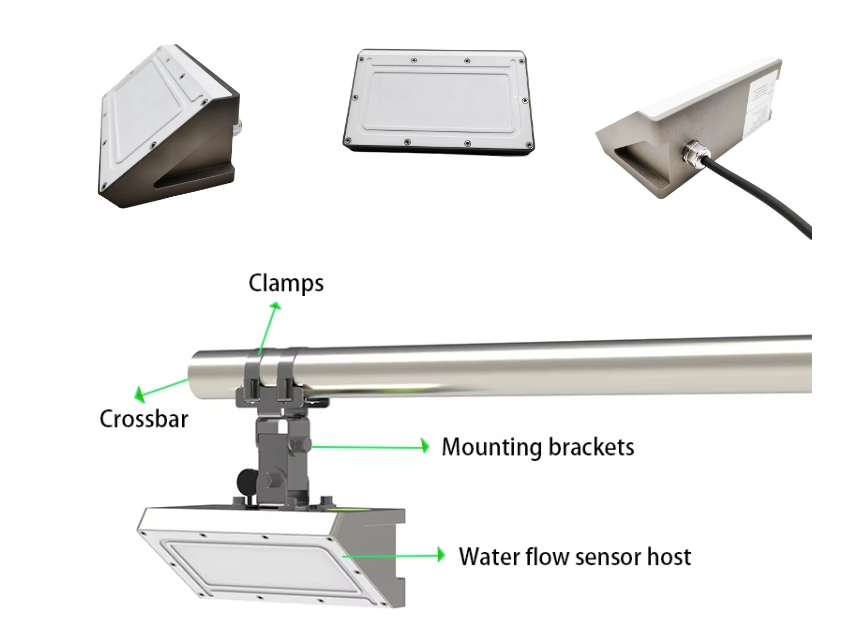Water resources management is critically important in Indonesia, an archipelago consisting of over 17,000 islands, each with its own unique hydrological challenges. The increasing impact of climate change and rapid urbanization has escalated the need for efficient water monitoring and management systems. In particular, hydrological radar flow meters have emerged as an innovative solution for managing water flow in rivers, reservoirs, and irrigation systems across the country. This article delves into the application of hydrological radar flow meters in Indonesia, exploring their functionalities, benefits, and implications for water resource management.
1. The Growing Need for Accurate Water Flow Measurement
Indonesia experiences significant variability in rainfall and water flow due to its tropical climate and diverse geography. Seasonal floods and water shortages pose challenges for both urban and rural communities. Google Trends indicates a notable rise in searches related to “water measurement technology” and “flood monitoring” in Indonesia, particularly during the rainy season. This growing interest illustrates the urgency for real-time data and effective management practices to counteract water-related risks.
2. Overview of Hydrological Radar Flow Meter Technology
Hydrological radar flow meters utilize advanced radar technology to measure the velocity and volume of water flow in rivers and channels. These devices can operate effectively under various environmental conditions, providing accurate and real-time data without the need for direct contact with water. The radar technology’s non-invasive nature helps reduce maintenance issues and operational costs, making it an attractive option for many applications.
3. Key Applications in Indonesia
3.1 Flood Monitoring in Jakarta
Jakarta, the capital city of Indonesia, is prone to severe flooding due to its low-lying topography and inadequate drainage systems. Local authorities have implemented hydrological radar flow meters in key rivers and channels to enhance flood monitoring and management.
- Implementation: The radar flow meters provide continuous data on water levels and flow rates, allowing officials to issue timely warnings to the public and coordinate emergency responses. The integration of radar data into local flood management systems has helped reduce response times and improve the city’s resilience to flooding.
3.2 Managing Irrigation in Agricultural Regions
In Indonesia’s agricultural heartlands, efficient water management is vital for crop production. Hydrological radar flow meters are now being used in irrigation systems to optimize water distribution and ensure crops receive the right amount of water.
- Case Study: In East Java, farmers are using these meters to monitor irrigation canals, allowing them to adjust water flows based on real-time data about precipitation and evaporation rates. This technology not only improves water use efficiency but also enhances crop yields, providing economic benefits to local farming communities.
3.3 Water Resource Management in Remote Areas
Many remote areas in Indonesia lack proper water measurement infrastructure, leading to inefficient water management practices. Hydrological radar flow meters have been deployed in remote rivers and water bodies to provide essential data for local governments and communities.
- Impact: These systems enable better planning and implementation of water resource projects, such as dam construction and watershed management. By delivering accurate data, communities can make informed decisions about water usage, leading to more sustainable practices.
4. Challenges and Future Directions
Despite the success of hydrological radar flow meters in Indonesia, certain challenges remain. Issues such as the initial cost of installation, the need for technical expertise to interpret data, and maintenance in remote locations can hinder wider adoption. Additionally, integrating radar data with existing water management frameworks requires investment in training and infrastructure.
Looking ahead, advancements in technology, including machine learning and artificial intelligence, could further enhance the capabilities of hydrological radar flow meters. These innovations could improve data accuracy and processing capabilities, ultimately leading to more effective decision-making in water resource management.
Conclusion
The application of hydrological radar flow meters in Indonesia represents a significant advancement in the country’s efforts to manage its water resources effectively. By providing real-time data for flood monitoring, irrigation management, and resource planning, this technology helps mitigate the impacts of climate change and urbanization. As Indonesia continues to invest in and adopt innovative water monitoring solutions, hydrological radar flow meters will play a crucial role in ensuring sustainable water management and enhancing community resilience.
We can also provide a variety of solutions for
Complete set of servers and software wireless module, supports RS485 GPRS /4g/WIFI/LORA/LORAWAN
For more water radar flow sensor information,
please contact Honde Technology Co., LTD.
Email: info@hondetech.com
Company website: www.hondetechco.com
Tel: +86-15210548582
Post time: Jun-30-2025


